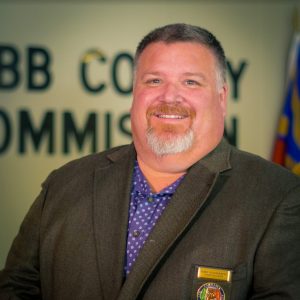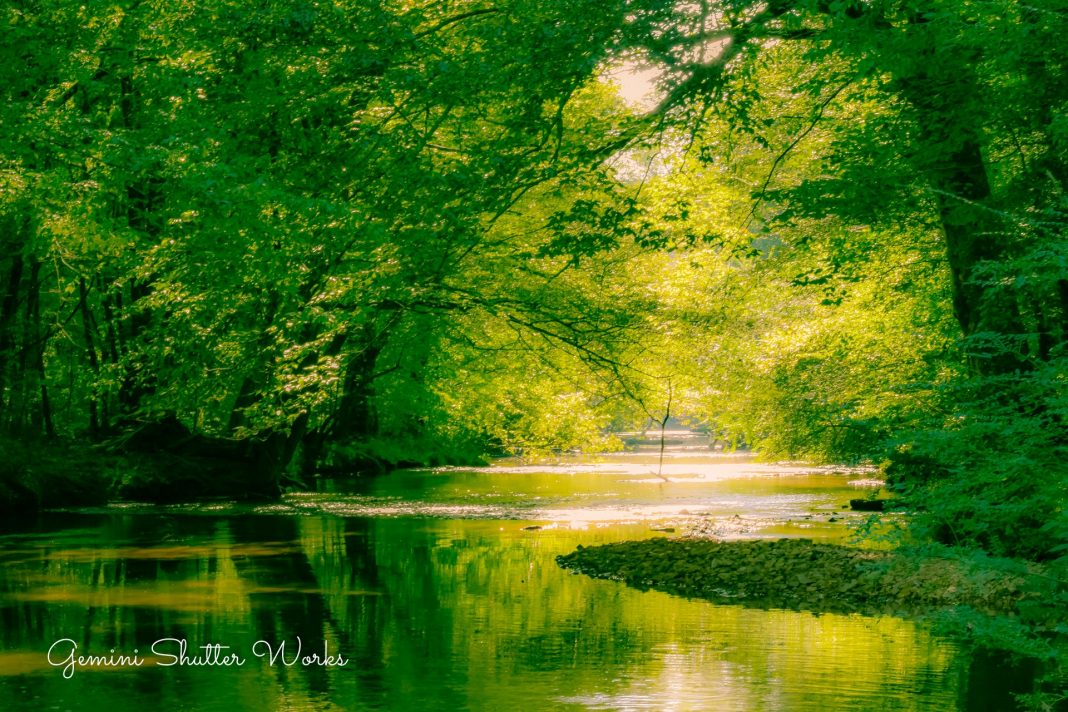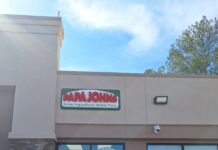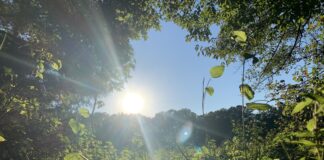Every year the state of Alabama receives money from the federal government as payment for the state’s part of a certain industry’s revenue. The State gives part of that to Bibb County. What do we do to get that money? We take care of our trees.
We will look closer at where the money comes from shortly. First, let’s look closer at what day it is. Arbor Day, or “tree day” as some people call it. Perhaps on National Arbor Day we should not only remember to take care of our trees, but remember how trees help take care of us, as well.
“Most every family in Bibb County is impacted in some way or other by timber … I guarantee you can’t find a family that it does not touch,” Commissioner Sammy Holdsambeck
What is Arbor Day? It’s the day we are to recognize the impact that trees have on our lives as humans. It is intended to inspire us to be good stewards of our trees, which provide so much – from houses and tools to the oxygen we breathe. We enjoy the forests for hunting, camping, hiking, and for many of us, where we place our homes. We harvest trees from our woods as perhaps our greatest renewable resource, providing us with building materials, paper, and more. From the Presidential Proclamation of 1972 by Richard Nixon, declaring the last Friday in April to be arbor day:
Einstein is believed to have said that a person should put back into this world at least as much as he takes out of it. The best available evidence suggests that an individual American, in his lifetime, uses the wood produced by some 200 mature trees. It is probably too much to expect that each American plant that many trees, but it is not too much to ask that each American assume a large, personal responsibility for renewing and preserving our environmental heritage.
The National Forest Service actively manages our national forests, including the Talladega National Forest Oakmulgee Ranger District, part of which is in Bibb County. As a part of their management, timber is thinned out to maintain a healthy forest. This timber is sold under contract. A portion of the revenue from timber sales within each state where a national forest is located is paid back to the state from which the timber was cut. The state then distributes that money to counties according to a formula. For 2017, the most recent year with data available, Bibb County received a total of $169,671 – the fifth highest dollar amount distributed to a county within Alabama. We have a lot of national forest land, and logging of that land takes place. Pretty much everyone who lives here is likely aware that it happens. Does everyone realize that we get federal money annually for having good trees, though?
According to Brian Davis, Bibb County Accountant, the federal funds paid to Bibb County from timber sales in national forest lands get distributed by rule as:
- 50% to the Board of Education
- 40% goes to roads
- 10% goes toward equipment for the firefighters that fight wild forest fires
…like Sammy Holdsambeck.

“We were the first county in the state to have a Caterpillar dozier … I think it cost about $160,000. We were saving the money up for several years.” — Sammy Holdsambeck, Bibb County Commissioner and Alabama Forestry Commission member.
Commissioner Holdsambeck added that besides going toward essentials like flame-retardant clothing, pickups, tools, and other equipment, the firefighters also use the funds for special programs to educate children about forest fires and taking care of our natural resources. “We do that every year in the fall for every 5th and 6th grader in the county.”
On the Forest Service website you can find their section on land management, where you can bid on harvesting various sections of timberland as part of their management process. The forest service takes bids and contracts out to private companies to harvest the national forest lands. They note, “Forest management continues to play an important role in the overall health of our national forest. Sound timber management practices help establish and maintain healthy and productive forests and ecosystems that are more resistant to insect attacks, diseases, ravages of fire and climatological events.” (https://www.fs.usda.gov/land/alabama/landmanagement)
Alabama is ripe with forests and wild areas. (It’s one of my favorite things about living here.) Proceeding down an internet rabbit-hole while researching Arbor Day, I ran across some interesting facts and figures about Alabama’s forest industry:
-
- Alabama is located in the heart of the southern U.S. with approximately 23 million acres of timberland (2017 Alabama Forest Resource Report).
- Alabama has the third most timberland acreage in the 48 contiguous states, behind only Georgia and Oregon.
- The state’s timberland acreage is 94% privately owned (2017 Alabama Forest Resource Report). That places Alabama second only to Georgia for private commercial timerland acreage.
- The state is gaining timber volume at a higher rate than most all other Southeastern states showing a 30.8% increase between the periods of 2001 to 2017 (FIA Data)
- Sawtimber size stands comprise 49% of the state’s timberland, while 28% of forest stands are comprised of mostly pulpwood-sized timber. Seedling/sampling sized stands account for the remaining 23% of timberland acreage
(http://www.forestry.alabama.gov/Pages/Education/Forest_Facts.aspx)
Comparing Bibb to the whole of the U.S., I found that in 2016 there were 69 regular employees in the forestry and logging industry in the county, earning a total of over $1,654,000 for the year. That’s a pretty good chunk of income. But, a “pretty good chunk” is relative. (https://factfinder.census.gov/faces/nav/jsf/pages/index.xhtml)

We have over 8,400 people in Bibb who are actively employed. Just over 1,500 of those work within Bibb County. The majority of those who work here are employed in the healthcare industry. Forestry and logging make up only 2.7% of our active workforce, according to an Alabama Department of Labor report on Bibb County. We have a relatively low unemployment rate of 3.9%. So, more people are unemployed here than actually work directly in forestry and logging now. There was a time that the number employed by forestry in Bibb was much higher. Commissioner Holdsambeck was shocked that the official number was below 20%.

“Most every family in Bibb County is impacted in some way or other by timber … I guarantee you can’t find a family that it does not touch,” Commissioner Holdsambeck commented of forestry’s impact on the county. “Coal mines made the north end, but it was timber that made the south end of the county. At one time there were nine sawmills around here. We still produce lumber, pulp, plywood … pretty much every wood product we make here in Bibb County.”
He added that technology developments have reduced the numbers of the workforce and caused some of the old sawmills to close. No longer do trucks have to stay nearby their destinations when delivering logs, and production is largely automated now as well. Even as logging shows to be a flat curve on the occupational growth charts and wood product manufacturing increases, new technology means not as much manpower is needed. So, the numbers get smaller. The people who remain are no less important, however.
It may be a small portion of our population tends to our forests and replants our trees for the next generations, but the combined efforts of these people not only gave us healthy trees via conservation of resources, but also brought us almost $170,000 from the federal government in 2017 in addition to the economic bump of doing business. In effect, our trees helped fund our schools, our roads, and our firefighters.
What could happen if more of us recognized National Arbor Day, and took part in tending our trees? If you do nothing else today, go stand under a tree and look up. Notice the blue sky beyond the canopy. That blue was provided with the air you’re breathing, by that tree that’s also providing you shade. Trees are pretty great things to have around. Some of them even give us money.














